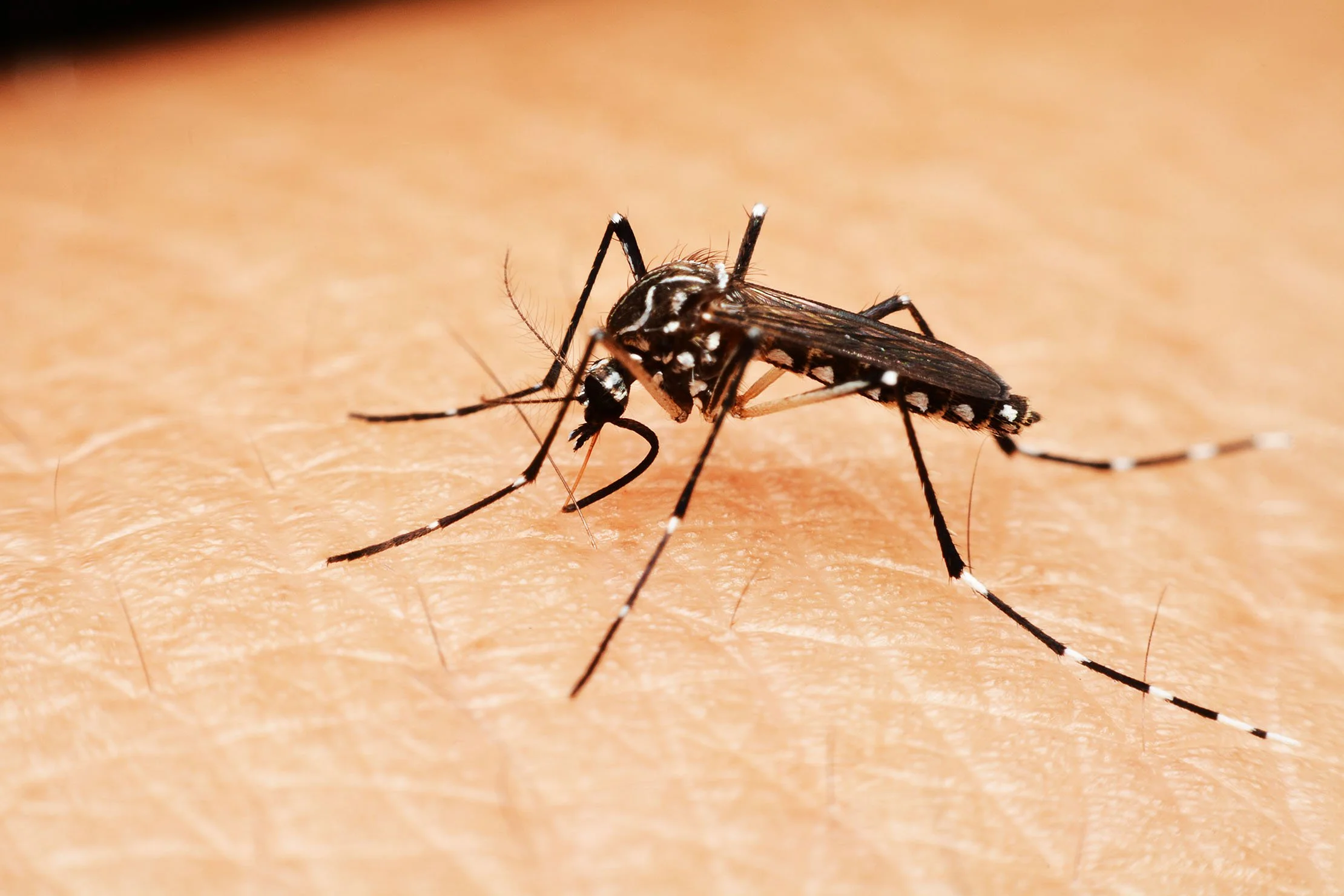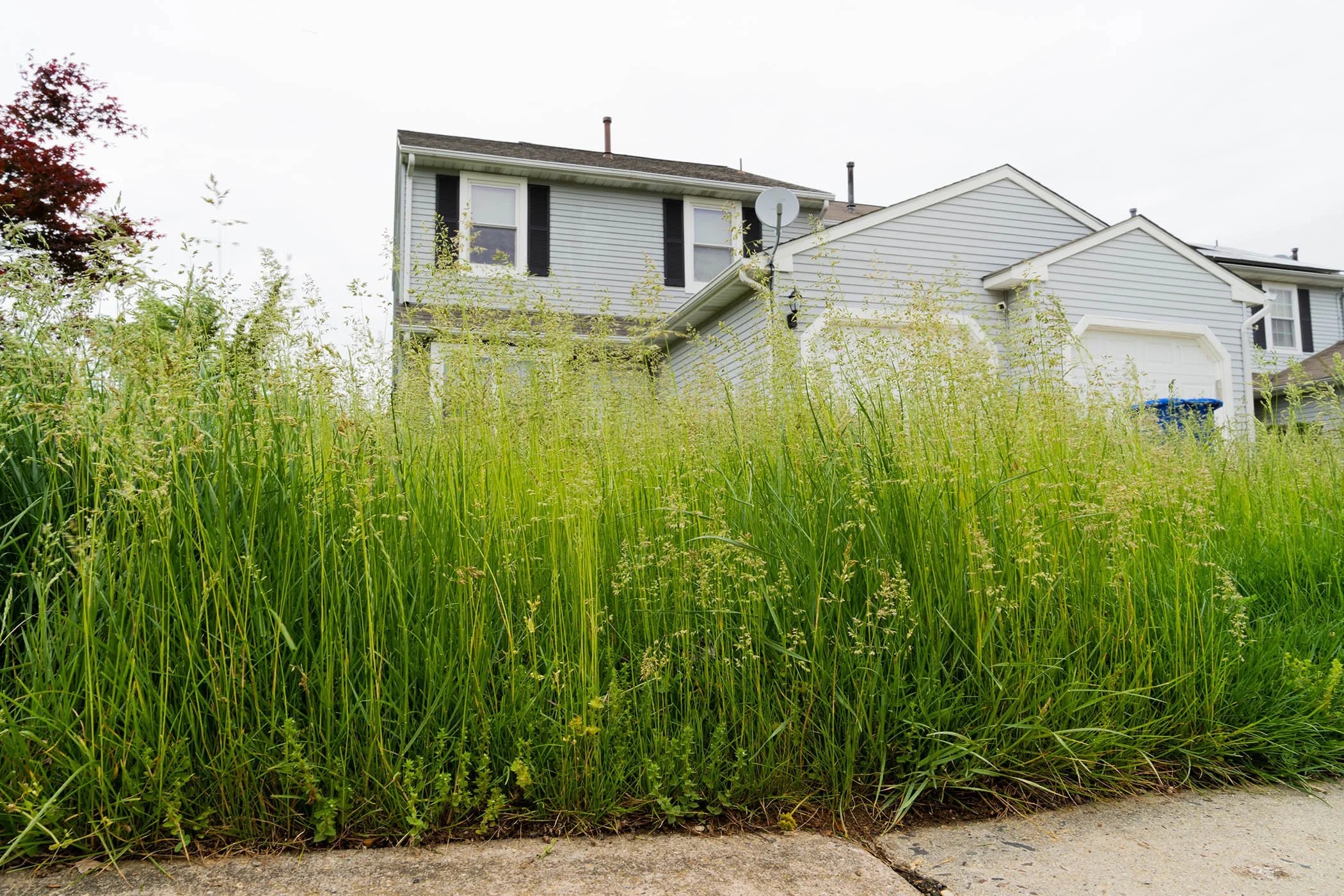Mosquitoes
Mosquitoes are more than just an itchy nuisance; they are among the deadliest creatures on Earth. Globally, they transmit diseases like West Nile virus, Zika virus, dengue, and malaria, causing over a million deaths annually. In the United States, mosquitoes also spread illnesses such as St. Louis encephalitis and can transmit heartworm to pets. A single female mosquito can lay over a thousand eggs in her lifetime, leading to rapid population growth. Controlling mosquito populations involves eliminating breeding sites, particularly stagnant water, and using effective treatments.



Understanding the Mosquito Life Cycle
Mosquitoes develop through four main stages: egg, larva, pupa, and adult. All of which depend on standing water to complete the cycle. Even small amounts of water, like those found in clogged gutters, birdbaths, flower pot trays, or discarded containers, can serve as ideal breeding sites. Warm temperatures and stagnant conditions accelerate development, allowing mosquitoes to mature in as little as a week, making water management critical to prevention.
-
Egg
Laid by female mosquitoes in or near stagnant water
Can hatch within 24–48 hours
Larva (Wriggler)
Lives in water, feeds on microorganisms
Sheds skin multiple times as it grows
Pupa (Tumbler)
A non-feeding stage where the mosquito transforms
Lasts about 1–4 days
Adult Mosquito
Emerges from the pupa and flies within hours
Females bite to feed on blood for egg production
The full cycle takes about 7–10 days, depending on temperature and water conditions.
Why You Have Mosquitoes in Southern California
Mosquitoes are increasingly common in Southern California due to a mix of climatic conditions, urban landscaping, and the rise of invasive species. Here are the main reasons they may be showing up around your home:
-
Warm, Dry Climate with Irrigation
SoCal’s warm temperatures and mild winters allow mosquitoes to remain active much longer than in colder regions. While the region is generally dry, regular irrigation in residential areas creates microenvironments that are perfect for mosquito breeding.Standing Water Sources
Mosquitoes need standing water to lay their eggs. Even very small amounts—such as water collected in plant saucers, clogged rain gutters, birdbaths, pet bowls, toys, or discarded containers can become active breeding sites. Mosquitoes can lay eggs in as little as a teaspoon of water.Urban Landscaping & Outdoor Water Features
Many Southern California homes feature lush gardens, lawns, ponds, fountains, and water features, which, if not properly maintained, can harbor mosquito larvae. Overwatering, poor drainage, or leaks in sprinkler systems can also create hidden moisture pockets.Invasive Mosquito Species
The aggressive Aedes aegypti and Aedes albopictus (also known as the yellow fever and Asian tiger mosquitoes) have become established in SoCal. These species are day-biters, unlike native mosquitoes, and prefer to live close to humans, laying eggs in small containers found around homes and patios.Lack of Awareness & Prevention
Many people don’t realize how easily mosquitoes can breed. A bottle cap, discarded cup, or a wrinkled tarp can collect enough water to support larvae. Without regular yard checks and water removal, infestations can build up quickly and silently.
Health Concerns of Mosquitoes
While mosquitoes are often seen as a simple nuisance, they pose serious health risks in Southern California due to their ability to transmit disease. With the rise of invasive species like Aedes aegypti, the region has seen increasing cases of mosquito-borne illnesses. These pests don’t just ruin outdoor enjoyment; they can impact your health and well-being.
-
The West Nile virus is the most common mosquito-borne illness in California. While many people experience mild or no symptoms, it can lead to severe neurological conditions such as encephalitis (brain inflammation) or meningitis.
Zika virus, though less common in the U.S., is a major concern for pregnant women, as it can cause serious birth defects like microcephaly, where a baby’s head is significantly smaller due to brain underdevelopment.
St. Louis encephalitis is a rare but potentially severe disease that can cause headaches, fever, confusion, and in serious cases, long-term brain damage or death, especially in older adults or those with weakened immune systems.
The presence of invasive mosquito species like Aedes aegypti increases the risk of these viruses spreading locally, even from people who recently traveled abroad.
-
Most people experience itchy, red welts shortly after being bitten. This reaction is due to the mosquito’s saliva, which triggers the body’s immune response.
Some individuals, especially children or those with allergies, may suffer from exaggerated reactions, including swelling, rash, or blistering.
Scratching can lead to skin breaks that become infected, especially if hygiene is poor or bites are repeatedly irritated.
In rare cases, people may experience skeeter syndrome, a more severe allergic reaction involving fever, swelling, and joint pain at the bite site.
-
The most common threat is heartworm disease, caused by a parasite transmitted through mosquito bites.
Once inside a pet's body, the heartworm larvae grow into long worms that inhabit the heart, lungs, and blood vessels, leading to lung disease, heart failure, and even death if not treated.
Heartworm is particularly dangerous because symptoms often appear late, when damage is already done. Prevention with monthly medication is the best defense.
Outdoor pets or those in mosquito-heavy areas are especially vulnerable and should be protected with both veterinary-recommended preventatives and environmental mosquito control.
Preventing Mosquitoes
Your patio can be a beautiful and relaxing space, but it's also a prime breeding ground for mosquitoes if not properly maintained. Preventing mosquitoes from invading your patio requires both eliminating breeding sites and creating a mosquito-unfriendly environment. Here are effective steps you can take to keep your outdoor space mosquito-free:
-
Eliminate Standing Water
Mosquitoes lay eggs in stagnant water, so empty flower pots, birdbaths, grill covers, and clogged gutters regularly.
Fix leaks in outdoor faucets, hoses, or sprinklers to prevent water accumulation.
Keep the Patio Clean and Clutter-Free
Remove debris such as fallen leaves, which can trap moisture and serve as hiding places for mosquito larvae.
Store outdoor furniture and cushions under protective covers or in a shed when not in use to avoid mosquito-friendly moisture.
Use Mosquito-Repellent Plants
Plant mosquito-repellent herbs and flowers like lavender, marigolds, citronella, and basil around your patio.
These plants can help naturally deter mosquitoes with their strong scents.
Encourage Air Movement
Mosquitoes are weak fliers, so using a fan on your patio, especially during evening hours, can keep them away.
Ceiling fans or oscillating fans are great for creating a breeze that mosquitoes can’t tolerate.
Use Mosquito Repellents
Mosquito-repellent candles, torches, or essential oils like eucalyptus, lemon balm, or citronella can be used for additional protection.
Close Entry Points
Ensure that screen doors and windows on your patio are secure and free of holes to prevent mosquitoes from entering your home.
Consider using mesh screens or netting around patio seating areas for extra protection.


